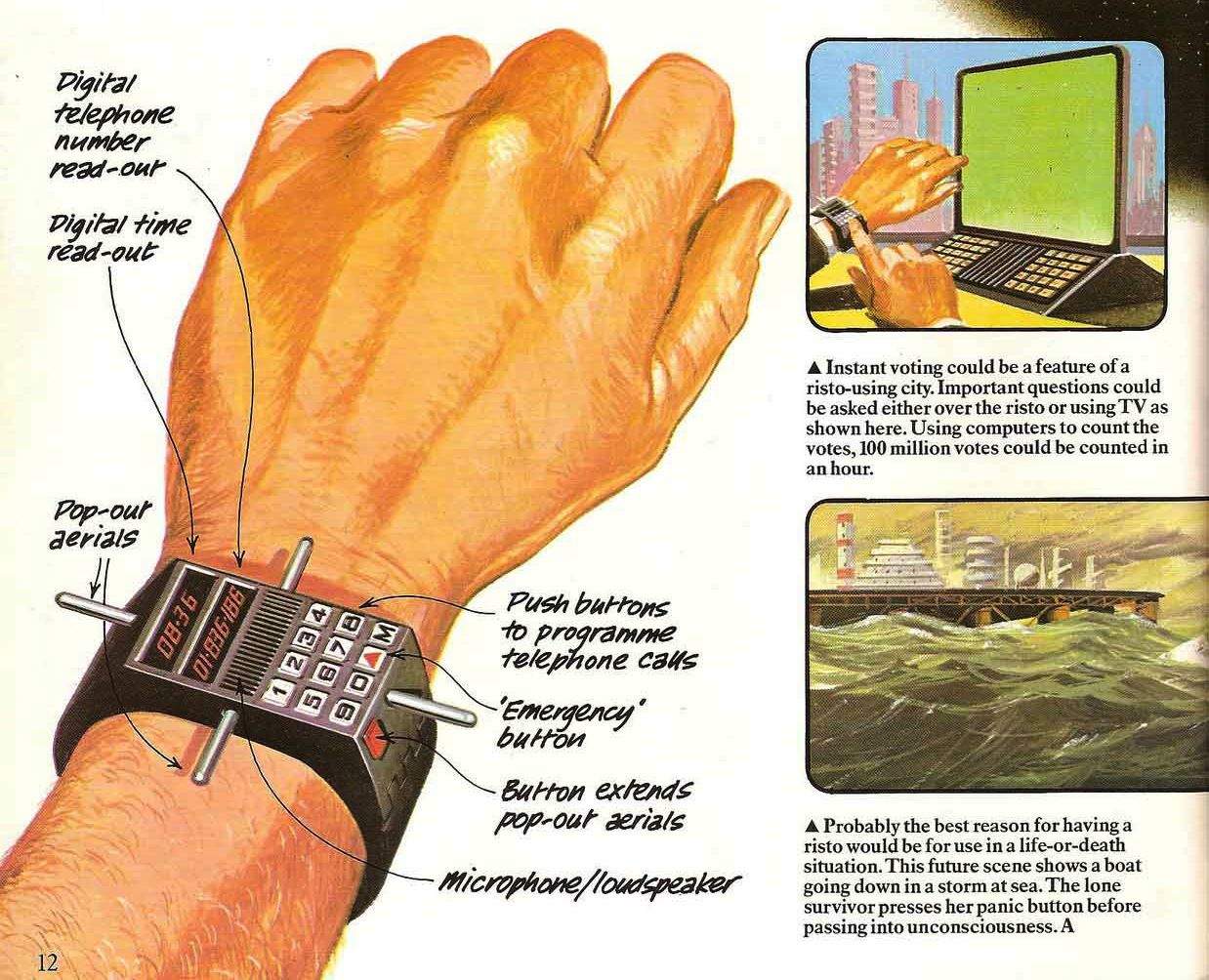From Dick Tracy to Apple Watch: 70 years of smartwatches

The Pulsar might have been the reality of digital watches around the time that Apple started, but what was predicted by the age’s futurists? The 1979 Usborne book Future Cities: Homes & Living Into the 21st Century describes the arrival of "wrist-phones" or “ristos.” These devices, the authors predicted, would work with cellphones and GPS equipment.
"City dwellers of tomorrow could have a small gadget of enormous benefit — a wristwatch radio-telephone,” the book notes. "With a wristwatch radio, you could talk to anyone, wherever you happened to be.... If you were late for an appointment, it would be easy to let the other people know.... It ought to be impossible to get lost in tomorrow's world, in a city or out of it.... The wrist-phone can provide guidance back to the nearest town.” Pretty accurate, no?
Picture: EDC Publishing

